Search results for: 'High te'
- Related search terms
- high frequ
- High temp
- High temperat
- High temperature
- HIGH PRES
-
 TT-6381 CUMBERLAND 1837B HEAVY DUTY GRANULATOR – NEWTT-6381 CUMBERLAND 1837B HEAVY DUTY GRANULATOR – NEW 1. CUMBERLAND 1837B HEAVY DUTY GRANULATOR 2. NEW 3. 37B HEAVY DUTY GRANULATOR QUANTITY: 1 Learn More
TT-6381 CUMBERLAND 1837B HEAVY DUTY GRANULATOR – NEWTT-6381 CUMBERLAND 1837B HEAVY DUTY GRANULATOR – NEW 1. CUMBERLAND 1837B HEAVY DUTY GRANULATOR 2. NEW 3. 37B HEAVY DUTY GRANULATOR QUANTITY: 1 Learn More -
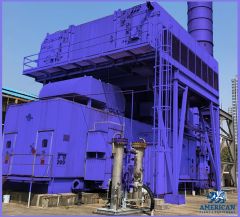 J-4722 GE LM6000 PA GAS TURBINE, 42 MW, 50 Hz, DUAL FUEL, 10,500 VOLTSJ-4722 GE LM6000 PA GAS TURBINE, 42 MW, 50 Hz, DUAL FUEL, 10,500 VOLTS MAKE: GE MODEL: LM6000 PA YEAR: 1993 42 MW 50 Hz DUAL FUEL 10,500 VOLTS CONDITION: USED, 12,000 HOURS QUANTITY: 1 Learn More
J-4722 GE LM6000 PA GAS TURBINE, 42 MW, 50 Hz, DUAL FUEL, 10,500 VOLTSJ-4722 GE LM6000 PA GAS TURBINE, 42 MW, 50 Hz, DUAL FUEL, 10,500 VOLTS MAKE: GE MODEL: LM6000 PA YEAR: 1993 42 MW 50 Hz DUAL FUEL 10,500 VOLTS CONDITION: USED, 12,000 HOURS QUANTITY: 1 Learn More -
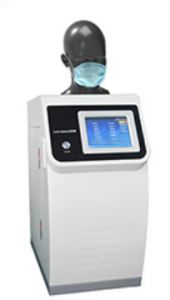 YY-1140 RESPIRATORY RESISTANCE TESTER, FLOWMETER RANGE 0 L/MIN~100L/MIN, FLOWMETER RANGE ACCURACY ±2%YY-1140 RESPIRATORY RESISTANCE TESTER, FLOWMETER RANGE 0 L/MIN~100L/MIN, FLOWMETER RANGE ACCURACY ±2% DETAILS: THE RESPIRATORY RESISTANCE TESTER IS SUITABLE FOR DETERMINING THE INHALATION RESISTANCE AND EXHALATION RESISTANCE OF RESPIRATORS AND MASK PROTECTIVE PRODUCTS UNDER SPECIFIED CONDITIONS, AND FOR THE RELATED TESTING AND INSPECTION OF COMMON MASK PRODUCTS BY MANUFACTURERS OF NATIONAL LABOR PROTECTION ARTICLE INSPECTION AGENCIES. STANDARD: GB2626-2006,GB/T32610-2016. Learn More
YY-1140 RESPIRATORY RESISTANCE TESTER, FLOWMETER RANGE 0 L/MIN~100L/MIN, FLOWMETER RANGE ACCURACY ±2%YY-1140 RESPIRATORY RESISTANCE TESTER, FLOWMETER RANGE 0 L/MIN~100L/MIN, FLOWMETER RANGE ACCURACY ±2% DETAILS: THE RESPIRATORY RESISTANCE TESTER IS SUITABLE FOR DETERMINING THE INHALATION RESISTANCE AND EXHALATION RESISTANCE OF RESPIRATORS AND MASK PROTECTIVE PRODUCTS UNDER SPECIFIED CONDITIONS, AND FOR THE RELATED TESTING AND INSPECTION OF COMMON MASK PRODUCTS BY MANUFACTURERS OF NATIONAL LABOR PROTECTION ARTICLE INSPECTION AGENCIES. STANDARD: GB2626-2006,GB/T32610-2016. Learn More -
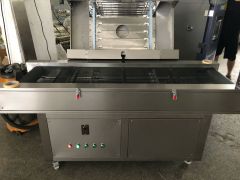 YY-1136 ULTRAVIOLET STERILIZERYY-1136 ULTRAVIOLET STERILIZER MAINTENANCE OF UV STERILIZER: 1 CHECK REGULARLY TO ENSURE THE NORMAL OPERATION OF THE UV LAMP. 2. AFTER 9000 HOURS OR ONE YEAR OF CONTINUOUS USE, THE ULTRAVIOLET LAMP SHOULD BE REPLACED. WHEN REPLACING A NEW LAMP, FIRST UNPLUG THE POWER SOCKET OF THE LAMP AND TAKE OUT THE ULTRAVIOLET LAMP. PAY ATTENTION NOT TO TOUCH THE QUARTZ GLASS OF THE NEW LAMP WITH YOUR FINGERS, BECAUSE THE STAIN WILL AFFECT THE INTENSITY OF THE LIGHT, AND CAREFULLY PUT THE LAMP INTO THE CHAMBER OF THE STERILIZER. Learn More
YY-1136 ULTRAVIOLET STERILIZERYY-1136 ULTRAVIOLET STERILIZER MAINTENANCE OF UV STERILIZER: 1 CHECK REGULARLY TO ENSURE THE NORMAL OPERATION OF THE UV LAMP. 2. AFTER 9000 HOURS OR ONE YEAR OF CONTINUOUS USE, THE ULTRAVIOLET LAMP SHOULD BE REPLACED. WHEN REPLACING A NEW LAMP, FIRST UNPLUG THE POWER SOCKET OF THE LAMP AND TAKE OUT THE ULTRAVIOLET LAMP. PAY ATTENTION NOT TO TOUCH THE QUARTZ GLASS OF THE NEW LAMP WITH YOUR FINGERS, BECAUSE THE STAIN WILL AFFECT THE INTENSITY OF THE LIGHT, AND CAREFULLY PUT THE LAMP INTO THE CHAMBER OF THE STERILIZER. Learn More -
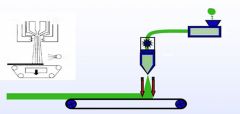 T-7066 MELTBLOWN NON-WOVEN PRODUCTION LINE- 1600mmT-7066 MELTBLOWN NON-WOVEN PRODUCTION LINE- 1600mm (1) EFFECTIVE WIDTH: 1600mm; (2) MAXIMUM COIL DIAMETER: 1200mm; (3) YIELD: 1.5 TO 2.0T /24 HOURS (20G/SQUARE); (4) FILAMENT SIZE: 2UM-5UM; (5) MAIN RAW MATERIALS: POLYPROPYLENE SLICING (MELTING AND SPRAYING SPECIAL MATERIALS) (6) PRODUCT WEIGHT: 15 TO 200G/M2. (7) MECHANICAL SPEED: 10 TO 80M/MIN; (8) INSTALLED CAPACITY: 450KW; (9) EQUIPMENT SIZE: 16000mm×6000mm×6000mm QUANTITY: 1 Learn More
T-7066 MELTBLOWN NON-WOVEN PRODUCTION LINE- 1600mmT-7066 MELTBLOWN NON-WOVEN PRODUCTION LINE- 1600mm (1) EFFECTIVE WIDTH: 1600mm; (2) MAXIMUM COIL DIAMETER: 1200mm; (3) YIELD: 1.5 TO 2.0T /24 HOURS (20G/SQUARE); (4) FILAMENT SIZE: 2UM-5UM; (5) MAIN RAW MATERIALS: POLYPROPYLENE SLICING (MELTING AND SPRAYING SPECIAL MATERIALS) (6) PRODUCT WEIGHT: 15 TO 200G/M2. (7) MECHANICAL SPEED: 10 TO 80M/MIN; (8) INSTALLED CAPACITY: 450KW; (9) EQUIPMENT SIZE: 16000mm×6000mm×6000mm QUANTITY: 1 Learn More -
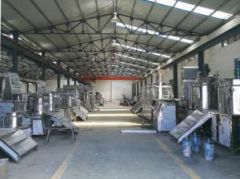 100L/H LIQUID SOAP PRODUCTION LINEREFERENCE NUMBER: T-6924 100L/H LIQUID SOAP PRODUCTION LINE ITEM 001 ARO- 250L RO WATER TREATMENT 1. CAPACITY: 250L/H; DESIGN VOLUME: 250L/H 2. WATER CONDUCTIVITY: PURE WATER MACHINE: ≤8US/CM (RAW WATER CONDUCTIVITY ≤300US) 3. RECLAIM RATE (%) 4. PH VALUE: BETWEEN 5.5 AND 7.5 5. DESALINATION RATE: WHOLE MACHINE DESALINATION RATE ≥98%, SINGLE MEMBRANE LOWEST DESALINATION RATE 99.6% 6. PRODUCT ADVANTAGES: HANGZHOU SOUTH PRESSURE PUMP, ANHYDROUS AUTOMATIC STOP, LOW PRESSURE, AUTOMATIC PURE WATER PIPE WATER AUTOMATIC FILLING WATER AND STOPFULL AUTOMATIC FUNCTIONS COMPLETE EQUIPMENT ADOPTS STAINLESS STEEL MATERIAL (PVC DRAINAGE PIPE, BEAUTIFUL APPEARANCE AND PRESSURE RESISTANCE. HIGH PRESSURE PUMP IS SOUTH PUMP, IMPORTED SOLENOID VALVE AND DOW MEMBRANE. 7. TECHNOLOGY: ATOM-PE TANKS-RAW WATER PUMP-QUARTZ-SAND FILTERS-ACTIVATED CARBON FILTER-SECURITY FILTER-REVERSE OSMOSIS HOST-PURE WATER TANK-PURE WATER PUMPS-UV STERILIZER-LIQUID WASHING WATER INTRODUCED BY HOST-STORAGE TANK-EDI SYSTEMS-HIGH PURITY WATER TANK-WATER CONSUMING POINT 8. SOURCE WATER PUMP: MODEL: CHL4-20 FLUX: 3M3/H DIAMETER: 35M POWER: 0.35KW MATERIAL: SUS304 1 SET 9. FRP/SUS304 SAND FILTER TYPE: VERTICAL CYLINDER RINSE DEVICE: MANUAL/AUTO FLUSH EQUIPMENT WATER OUTLET: 1 M3/H SIZE: φ250 X 1250 (mm) BARREL HEIGHT: 2/3 OF PILLAR HEIGHT WORK PRESSURE: ≤0.8MPA EQUIPMENT MATERIAL: FRP/SUS304 FILTER MEDIUM: REFINED QUARTZ SAND~5 1 SET 10. FRP/SUS304 CARBON FILTER TYPE: VERTICAL CYLINDER RINSE DEVICE: MANUAL/AUTO FLUSH EQUIPMENT WATER OUTPUT: 1M3/H SIZE: φ250*1250 (mm) BARREL HEIGHT: 2/3 OF PILLAR HEIGHT WORK PRESSURE: ≤0.9MPA EQUIPMENT MATERIAL: FRP/SUS304 FILTER MEDIUM: ACTIVATED CARBON, PARTICLE SIZE: 0.3 TO 0.4M, 25KG 1 SET 11. PRECISION FILTER SIZE: 20 INCH, 5UM FILTER ELEMENT 2 PCS FLUX: 2T/H MATERIAL: OUTSIDE FILM BLUE PLASTIC EQUIP: 20 INCH 5UM SPRAY FILTER 2 PIECE 1 SET 12. STAINLESS STEEL HIGH PRESSURE PUMP MODEL: CDL WATER OUTPUT: 2T/H DIAMETER: 120M POWER: 0.75KW 1 SET 13. MEMBRANE SHELL MODEL: 4040, MATERIAL: STAINLESS STEEL, 1 LINE 14. REVERSE OSMOSIS MEMBRANE MODEL: DOWREBE4040 DOMESTIC MEMBRANE SINGLE FLOW: 0.25T/H 1 PC 15. CONDUCTIVITY METER - ONLINE MEASURE, CM-240 DIGITAL DISPLAY, 2 SETS 16. WATER SOLENOID VALVE DN25 STAINLESS STEEL, 1 SET 17. RINSE SOLENOID VALVE DN20 STAINLESS STEEL, 1 SET 18. CONTROL VALVE SUS DN20, 2 SETS 19. FLOW METER MODEL: 20750, 0 TO 11GPM, 2 SETS 20. PRESSURE METER, MODEL: 0 TO 0.6MPA, MODEL: 0 TO 2.5MPA, 4 PCS 21. LOW PRESSURE CONTROLLER MODEL: PSI, 1 SET 22. EQUIPMENT RACK, MATERIAL: SUS304, 1 SET 23. PIPELINE, PIPE FITTINGS, FRP/SUS304, 1 SET 24. ELECTRICAL CONTROL CABINET, SUS304 MATERIAL, 1 SET 25. ELECTRICAL COMPONENTS, DELIXI, 1 SET 26. UV DEVICE, 24W OVERCURRENT UV STERILIZER, 1 SET QUANTITY: 1 SET ITEM 002 AHM-200L LIQUID HOMOGENIZER MIXER 1. MAIN POT FULL VOLUME: 240L WORKING CAPACITY: 60 TO 200L INTERNAL AND EXTERNAL SANITATION POLISHING≥300 MESH A. INNER TANK SUS316L, THICK: 5mm SEAL HEAD: SUS316L, THICKNESS: 4mm IMPORT STAINLESS STEEL B. JACKET SUS304, THICK: 5mm, ELECTRIC HEATING: 12KW TAP WATER COOLING BOTTOM INLET AND TOP OUTLET C. SHELL SUS304, THICK: 3mm INSULATION MEDIA: ALUMINUM SILICATE D. LID SUS304, HALF OPEN HINGED LID GMP HYGIENE STANDARDS E. AGITATOR FRAME TYPE WALL SCRAPER MIXING, WITH ONE FIXED PROPELLER FLANGE SHAFT COUPLING STIRRER PADDLE: SUS316L, THICK: 10mm SCRAPER BLADE: PTFE MATERIAL, REMOVE PRODUCT FROM THE WALL F. AGITATOR MOTOR POWER: 2.2KW SIEMENS MOTOR AND REDUCER SPEED: 0 TO 65RPM DELTA FREQUENCY INVERTER G. SEALING OF AGITATOR THREE WAY SKELETON OIL SEAL + NSK BEARING H. BOTTOM HOMOGENIZER POWER: 4KW, SIEMENS MOTOR SUS316L, ROTOR AND STATOR HIGH SHEARING HOMOGENIZER SPEED: 0 TO 3600 RPM, DELTA INVERTER I. SEALING OF HOMOGENIZER MECHANICAL SEAL+ WATER COOLING CIRCULATION J. DISCHARGING WAY SUS316L, DN36 BOTTOM BALL VALVE HYGIENE LEVEL 2. ELECTRIC CONTROL SYSTEM SHELL MATERIAL: SUS304, THICKNESS: 2mm STAINLESS STEEL SAND PANEL STANDARD CONFIGURATION: INSTRUMENT, BUTTON, APPLIANCE COMPONENTS SCHNEIDER 3. PLATFORM & BRACKET ALL SS AND EQUIPPED WITH ANTI-SKID ALUMINUM PLATE BEST CONFIGURATION 4. OTHER ACCESSORY SPARE PARTS PROVIDE NAMES & QUANTITY OF SPECIAL AND VULNERABLE PARTS RANDOM QUANTITY: 1 SET ITEM 003 HORIZONTAL LIQUID FILLING MACHINE CYLINDER - BRAND: AIRTAC FAMOUS BRAND, LOW GAS CONSUMPTION STRONG DRIVING FORCE CONTROL SYSTEM - "MANUAL/AUTOMATIC" CONTROL, "RESET", "MANOMETER". FOOT CONTROL PANEL - CONTROLLED BY FOOT, MATERIALS ARE FILLED INTO BOTTLES WHEN PRESS THIS PANEL. MATERIAL ENTRANCE - USING STEEL PIPE CONNECT WITH CHARGING BASKET. FILLING NOZZLE - FILLING VOLUME AND FILLING NOZZLE SIZE IS OPTIONAL. 1 STRUCTURE SELF-SUCTION PRODUCTS TO FILLING MACHINE FULL PNEUMATIC CONTROL NORMAL GRAVITY TYPE FEEDING PRODUCTS. CHANGE MANUAL" AND "AUTOMATIC" FILLING STATE PISTON CYLINDER CONTROL VOLUME 2 PRINCIPLE COMPRESSED AIR CONTROL DRIVE USING LEAD SCREW, COUNTER, MAKE FILLING QUANTITY ADJUSTMENT ACCURATE EMERGENCY SWITCH, PISTON AUTOMATICALLY RETREAT BACK TO INITIAL BITS, FILLING STOP. 3 CYLINDER: AIRTAC 4 MATERIAL: SS316L FOR ALL CONTACT PRODUCTS PART, OTHER PARTS SS304 8 FILLING RANGE: 500 TO 5000ML 10 FILLING SPEED: 0 TO 30BPM (ADJUSTABLE) 12 AIR PRESSURE: 0.5 TO 0.8MPA 13 WORKING PRESSURE: 0.2 TO 0.5MPA 14 AIR CONSUMPTION: 0.05M3/MIN 15 WEIGHT: 45KG QUANTITY: 1 SET ITEM 004 SEMI AUTOMATIC CAPPING MACHINE CAPPING TIME & TORQUE CONTROL HEIGHT CONTROL ACCORDING TO BOTTLES CAPPING CONTROL MOTOR - MOVE AROUND ON BOTH SIDES TO CONTROL CAPPING CAPS SCREW CAPPING PARTS - 4 SILICONE ROTATING CAPS PART PUMP CAP SETTING PART- FIXING PUMP PART AND THEN ROTATING CAPS 1. BOTTLE LOCK RANGE BOTTLE HEIGHT: 30 TO 300mm BOTTLE WIDTH: 15 TO 100mm 2. LOCK LID WRESTING: STANDARD VALUE 4 TO 8KG/CM 3. POWER: 80W 4. USE OF GAS SOURCE: 0.4 TO 0.6MPA 5. VOLTAGE: 220V/50Hz 6. SIZE: 500 X 380X 700mm 7. NET WEIGHT: 35 KG QUANTITY: 1 SET ITEM 005 ALM -SEMI AUTOMATIC ROUND BOTTLE LABELING MACHINE 1. SCOPE OF APPLICABLE LABELS: WIDTH OF 10 TO 350mm, LENGTH OF 10-150mm 2. DIAMETER OF APPLICATE BOTTLE NECK: EXTERNAL DIAMETER OF 20-80(mm), HEIGHT OF 30 TO 200(mm) 3. MAX ROLL INSIDE DIAMETER: 76mm 4. PRODUCTION CAPACITY: 1200 TO 2400 BOTTLES/HOUR (IT DEPENDS ON SIZE OF LABEL AND SPEED OF MANUAL OPERATION) 5. RATED VOLTAGE: 220V/50Hz 6. TOTAL POWER: 100W QUANTITY: 1 SET ITEM 006 ALM -SEMI AUTOMATIC FLAT BOTTLE LABELING MACHINE 1. SCOPE OF APPLICABLE LABELS: WIDTH OF 10 TO 350mm, LENGTH OF 10 TO 150mm 2. DIAMETER OF APPLICATE BOTTLE NECK: EXTERNAL DIAMETER OF 20 TO 80(mm), HEIGHT OF 30 TO 200(mm) 3. MAX ROLL INSIDE DIAMETER: 76mm 4. PRODUCTION CAPACITY: 1200 TO 2400 BOTTLES/HOUR (IT DEPENDS ON SIZE OF LABEL AND SPEED OF MANUAL OPERATION) 5. RATED VOLTAGE: 220V/50Hz 6. TOTAL POWER: 100W QUANTITY: 1 SET ITEM 007 HANDHELD INKJET PRINTER 1. MATERIAL: STAINLESS STEEL 2. DIMENSION: 130 X 128 X 200mm 3. CONTROL SCREEN: COLOR TOUCH SCREEN, INTELLIGENT TOUCH SCREEN (CAN BE CONTROLLED BY UNIVERSAL WIRELESS MOUSE, CAN ALSO BE IMPORTED ON THE COMPUTER AND IMPORTED THROUGH U DISK) 4. PRINTING: 360° ALL-IN-ONE CODING, WHETHER IT IS ARBITRARILY FACING FORWARD AND DOWNWARD, TO MEET PRODUCTION NEEDS. 5. PRINTING FONT: BUILT-IN NATIONAL STANDARD FULL FONT, PINYIN INPUT METHOD, TOUCH ONLINE EDITING, NO NEED TO CONNECT TO THE COMPUTER, EASY TO OPERATE. 6. PRINTED FONTS: HIGH-DEFINITION PRINTED FONTS (IE PRINTED) DOT MATRIX FONTS, BUILT-IN MULTIPLE CHINESE AND ENGLISH FONTS. 7. PRINTING GRAPHICS: CAN SPRAY A VARIETY OF TRADEMARK PATTERNS, GRAPHICS CAN BE IMPORTED THROUGH THE U DISK. 8. PRINTING ACCURACY: 600DPI (HIGH DEFINITION) 9. NUMBER OF PRINT LINES: ADJUSTABLE FROM ONE TO SEVEN LINES 10. PRINTING HEIGHT: CAN BE PRINTED 2mm-13mm (ADJUSTABLE) PLUS NOZZLE (CAN BE INCREASED TO 50 mm) 11. PRINTING BAR CODE: BAR CODE, 2D BAR CODE 12. WEIGHT: 1.18KG 13. PRINTING MATERIALS: WOOD BOARD, CARTON, STONE, MDF, LIGHT STEEL KEEL, PIPE, METAL, PLASTIC, ALUMINUM FOIL, CABLE, ETC. QUANTITY: 1 SET ITEM 008 AIR COMPRESSOR 1. POWER: 4KW QUANTITY: 1 SET Learn More
100L/H LIQUID SOAP PRODUCTION LINEREFERENCE NUMBER: T-6924 100L/H LIQUID SOAP PRODUCTION LINE ITEM 001 ARO- 250L RO WATER TREATMENT 1. CAPACITY: 250L/H; DESIGN VOLUME: 250L/H 2. WATER CONDUCTIVITY: PURE WATER MACHINE: ≤8US/CM (RAW WATER CONDUCTIVITY ≤300US) 3. RECLAIM RATE (%) 4. PH VALUE: BETWEEN 5.5 AND 7.5 5. DESALINATION RATE: WHOLE MACHINE DESALINATION RATE ≥98%, SINGLE MEMBRANE LOWEST DESALINATION RATE 99.6% 6. PRODUCT ADVANTAGES: HANGZHOU SOUTH PRESSURE PUMP, ANHYDROUS AUTOMATIC STOP, LOW PRESSURE, AUTOMATIC PURE WATER PIPE WATER AUTOMATIC FILLING WATER AND STOPFULL AUTOMATIC FUNCTIONS COMPLETE EQUIPMENT ADOPTS STAINLESS STEEL MATERIAL (PVC DRAINAGE PIPE, BEAUTIFUL APPEARANCE AND PRESSURE RESISTANCE. HIGH PRESSURE PUMP IS SOUTH PUMP, IMPORTED SOLENOID VALVE AND DOW MEMBRANE. 7. TECHNOLOGY: ATOM-PE TANKS-RAW WATER PUMP-QUARTZ-SAND FILTERS-ACTIVATED CARBON FILTER-SECURITY FILTER-REVERSE OSMOSIS HOST-PURE WATER TANK-PURE WATER PUMPS-UV STERILIZER-LIQUID WASHING WATER INTRODUCED BY HOST-STORAGE TANK-EDI SYSTEMS-HIGH PURITY WATER TANK-WATER CONSUMING POINT 8. SOURCE WATER PUMP: MODEL: CHL4-20 FLUX: 3M3/H DIAMETER: 35M POWER: 0.35KW MATERIAL: SUS304 1 SET 9. FRP/SUS304 SAND FILTER TYPE: VERTICAL CYLINDER RINSE DEVICE: MANUAL/AUTO FLUSH EQUIPMENT WATER OUTLET: 1 M3/H SIZE: φ250 X 1250 (mm) BARREL HEIGHT: 2/3 OF PILLAR HEIGHT WORK PRESSURE: ≤0.8MPA EQUIPMENT MATERIAL: FRP/SUS304 FILTER MEDIUM: REFINED QUARTZ SAND~5 1 SET 10. FRP/SUS304 CARBON FILTER TYPE: VERTICAL CYLINDER RINSE DEVICE: MANUAL/AUTO FLUSH EQUIPMENT WATER OUTPUT: 1M3/H SIZE: φ250*1250 (mm) BARREL HEIGHT: 2/3 OF PILLAR HEIGHT WORK PRESSURE: ≤0.9MPA EQUIPMENT MATERIAL: FRP/SUS304 FILTER MEDIUM: ACTIVATED CARBON, PARTICLE SIZE: 0.3 TO 0.4M, 25KG 1 SET 11. PRECISION FILTER SIZE: 20 INCH, 5UM FILTER ELEMENT 2 PCS FLUX: 2T/H MATERIAL: OUTSIDE FILM BLUE PLASTIC EQUIP: 20 INCH 5UM SPRAY FILTER 2 PIECE 1 SET 12. STAINLESS STEEL HIGH PRESSURE PUMP MODEL: CDL WATER OUTPUT: 2T/H DIAMETER: 120M POWER: 0.75KW 1 SET 13. MEMBRANE SHELL MODEL: 4040, MATERIAL: STAINLESS STEEL, 1 LINE 14. REVERSE OSMOSIS MEMBRANE MODEL: DOWREBE4040 DOMESTIC MEMBRANE SINGLE FLOW: 0.25T/H 1 PC 15. CONDUCTIVITY METER - ONLINE MEASURE, CM-240 DIGITAL DISPLAY, 2 SETS 16. WATER SOLENOID VALVE DN25 STAINLESS STEEL, 1 SET 17. RINSE SOLENOID VALVE DN20 STAINLESS STEEL, 1 SET 18. CONTROL VALVE SUS DN20, 2 SETS 19. FLOW METER MODEL: 20750, 0 TO 11GPM, 2 SETS 20. PRESSURE METER, MODEL: 0 TO 0.6MPA, MODEL: 0 TO 2.5MPA, 4 PCS 21. LOW PRESSURE CONTROLLER MODEL: PSI, 1 SET 22. EQUIPMENT RACK, MATERIAL: SUS304, 1 SET 23. PIPELINE, PIPE FITTINGS, FRP/SUS304, 1 SET 24. ELECTRICAL CONTROL CABINET, SUS304 MATERIAL, 1 SET 25. ELECTRICAL COMPONENTS, DELIXI, 1 SET 26. UV DEVICE, 24W OVERCURRENT UV STERILIZER, 1 SET QUANTITY: 1 SET ITEM 002 AHM-200L LIQUID HOMOGENIZER MIXER 1. MAIN POT FULL VOLUME: 240L WORKING CAPACITY: 60 TO 200L INTERNAL AND EXTERNAL SANITATION POLISHING≥300 MESH A. INNER TANK SUS316L, THICK: 5mm SEAL HEAD: SUS316L, THICKNESS: 4mm IMPORT STAINLESS STEEL B. JACKET SUS304, THICK: 5mm, ELECTRIC HEATING: 12KW TAP WATER COOLING BOTTOM INLET AND TOP OUTLET C. SHELL SUS304, THICK: 3mm INSULATION MEDIA: ALUMINUM SILICATE D. LID SUS304, HALF OPEN HINGED LID GMP HYGIENE STANDARDS E. AGITATOR FRAME TYPE WALL SCRAPER MIXING, WITH ONE FIXED PROPELLER FLANGE SHAFT COUPLING STIRRER PADDLE: SUS316L, THICK: 10mm SCRAPER BLADE: PTFE MATERIAL, REMOVE PRODUCT FROM THE WALL F. AGITATOR MOTOR POWER: 2.2KW SIEMENS MOTOR AND REDUCER SPEED: 0 TO 65RPM DELTA FREQUENCY INVERTER G. SEALING OF AGITATOR THREE WAY SKELETON OIL SEAL + NSK BEARING H. BOTTOM HOMOGENIZER POWER: 4KW, SIEMENS MOTOR SUS316L, ROTOR AND STATOR HIGH SHEARING HOMOGENIZER SPEED: 0 TO 3600 RPM, DELTA INVERTER I. SEALING OF HOMOGENIZER MECHANICAL SEAL+ WATER COOLING CIRCULATION J. DISCHARGING WAY SUS316L, DN36 BOTTOM BALL VALVE HYGIENE LEVEL 2. ELECTRIC CONTROL SYSTEM SHELL MATERIAL: SUS304, THICKNESS: 2mm STAINLESS STEEL SAND PANEL STANDARD CONFIGURATION: INSTRUMENT, BUTTON, APPLIANCE COMPONENTS SCHNEIDER 3. PLATFORM & BRACKET ALL SS AND EQUIPPED WITH ANTI-SKID ALUMINUM PLATE BEST CONFIGURATION 4. OTHER ACCESSORY SPARE PARTS PROVIDE NAMES & QUANTITY OF SPECIAL AND VULNERABLE PARTS RANDOM QUANTITY: 1 SET ITEM 003 HORIZONTAL LIQUID FILLING MACHINE CYLINDER - BRAND: AIRTAC FAMOUS BRAND, LOW GAS CONSUMPTION STRONG DRIVING FORCE CONTROL SYSTEM - "MANUAL/AUTOMATIC" CONTROL, "RESET", "MANOMETER". FOOT CONTROL PANEL - CONTROLLED BY FOOT, MATERIALS ARE FILLED INTO BOTTLES WHEN PRESS THIS PANEL. MATERIAL ENTRANCE - USING STEEL PIPE CONNECT WITH CHARGING BASKET. FILLING NOZZLE - FILLING VOLUME AND FILLING NOZZLE SIZE IS OPTIONAL. 1 STRUCTURE SELF-SUCTION PRODUCTS TO FILLING MACHINE FULL PNEUMATIC CONTROL NORMAL GRAVITY TYPE FEEDING PRODUCTS. CHANGE MANUAL" AND "AUTOMATIC" FILLING STATE PISTON CYLINDER CONTROL VOLUME 2 PRINCIPLE COMPRESSED AIR CONTROL DRIVE USING LEAD SCREW, COUNTER, MAKE FILLING QUANTITY ADJUSTMENT ACCURATE EMERGENCY SWITCH, PISTON AUTOMATICALLY RETREAT BACK TO INITIAL BITS, FILLING STOP. 3 CYLINDER: AIRTAC 4 MATERIAL: SS316L FOR ALL CONTACT PRODUCTS PART, OTHER PARTS SS304 8 FILLING RANGE: 500 TO 5000ML 10 FILLING SPEED: 0 TO 30BPM (ADJUSTABLE) 12 AIR PRESSURE: 0.5 TO 0.8MPA 13 WORKING PRESSURE: 0.2 TO 0.5MPA 14 AIR CONSUMPTION: 0.05M3/MIN 15 WEIGHT: 45KG QUANTITY: 1 SET ITEM 004 SEMI AUTOMATIC CAPPING MACHINE CAPPING TIME & TORQUE CONTROL HEIGHT CONTROL ACCORDING TO BOTTLES CAPPING CONTROL MOTOR - MOVE AROUND ON BOTH SIDES TO CONTROL CAPPING CAPS SCREW CAPPING PARTS - 4 SILICONE ROTATING CAPS PART PUMP CAP SETTING PART- FIXING PUMP PART AND THEN ROTATING CAPS 1. BOTTLE LOCK RANGE BOTTLE HEIGHT: 30 TO 300mm BOTTLE WIDTH: 15 TO 100mm 2. LOCK LID WRESTING: STANDARD VALUE 4 TO 8KG/CM 3. POWER: 80W 4. USE OF GAS SOURCE: 0.4 TO 0.6MPA 5. VOLTAGE: 220V/50Hz 6. SIZE: 500 X 380X 700mm 7. NET WEIGHT: 35 KG QUANTITY: 1 SET ITEM 005 ALM -SEMI AUTOMATIC ROUND BOTTLE LABELING MACHINE 1. SCOPE OF APPLICABLE LABELS: WIDTH OF 10 TO 350mm, LENGTH OF 10-150mm 2. DIAMETER OF APPLICATE BOTTLE NECK: EXTERNAL DIAMETER OF 20-80(mm), HEIGHT OF 30 TO 200(mm) 3. MAX ROLL INSIDE DIAMETER: 76mm 4. PRODUCTION CAPACITY: 1200 TO 2400 BOTTLES/HOUR (IT DEPENDS ON SIZE OF LABEL AND SPEED OF MANUAL OPERATION) 5. RATED VOLTAGE: 220V/50Hz 6. TOTAL POWER: 100W QUANTITY: 1 SET ITEM 006 ALM -SEMI AUTOMATIC FLAT BOTTLE LABELING MACHINE 1. SCOPE OF APPLICABLE LABELS: WIDTH OF 10 TO 350mm, LENGTH OF 10 TO 150mm 2. DIAMETER OF APPLICATE BOTTLE NECK: EXTERNAL DIAMETER OF 20 TO 80(mm), HEIGHT OF 30 TO 200(mm) 3. MAX ROLL INSIDE DIAMETER: 76mm 4. PRODUCTION CAPACITY: 1200 TO 2400 BOTTLES/HOUR (IT DEPENDS ON SIZE OF LABEL AND SPEED OF MANUAL OPERATION) 5. RATED VOLTAGE: 220V/50Hz 6. TOTAL POWER: 100W QUANTITY: 1 SET ITEM 007 HANDHELD INKJET PRINTER 1. MATERIAL: STAINLESS STEEL 2. DIMENSION: 130 X 128 X 200mm 3. CONTROL SCREEN: COLOR TOUCH SCREEN, INTELLIGENT TOUCH SCREEN (CAN BE CONTROLLED BY UNIVERSAL WIRELESS MOUSE, CAN ALSO BE IMPORTED ON THE COMPUTER AND IMPORTED THROUGH U DISK) 4. PRINTING: 360° ALL-IN-ONE CODING, WHETHER IT IS ARBITRARILY FACING FORWARD AND DOWNWARD, TO MEET PRODUCTION NEEDS. 5. PRINTING FONT: BUILT-IN NATIONAL STANDARD FULL FONT, PINYIN INPUT METHOD, TOUCH ONLINE EDITING, NO NEED TO CONNECT TO THE COMPUTER, EASY TO OPERATE. 6. PRINTED FONTS: HIGH-DEFINITION PRINTED FONTS (IE PRINTED) DOT MATRIX FONTS, BUILT-IN MULTIPLE CHINESE AND ENGLISH FONTS. 7. PRINTING GRAPHICS: CAN SPRAY A VARIETY OF TRADEMARK PATTERNS, GRAPHICS CAN BE IMPORTED THROUGH THE U DISK. 8. PRINTING ACCURACY: 600DPI (HIGH DEFINITION) 9. NUMBER OF PRINT LINES: ADJUSTABLE FROM ONE TO SEVEN LINES 10. PRINTING HEIGHT: CAN BE PRINTED 2mm-13mm (ADJUSTABLE) PLUS NOZZLE (CAN BE INCREASED TO 50 mm) 11. PRINTING BAR CODE: BAR CODE, 2D BAR CODE 12. WEIGHT: 1.18KG 13. PRINTING MATERIALS: WOOD BOARD, CARTON, STONE, MDF, LIGHT STEEL KEEL, PIPE, METAL, PLASTIC, ALUMINUM FOIL, CABLE, ETC. QUANTITY: 1 SET ITEM 008 AIR COMPRESSOR 1. POWER: 4KW QUANTITY: 1 SET Learn More -
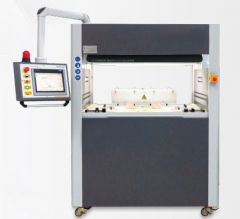 SEMI INDUSTRIAL SCALE MULTI NOZZLE ELECTROSPINNING UNITREFERENCE NUMBER: A-2473 SEMI INDUSTRIAL SCALE MULTI NOZZLE ELECTROSPINNING UNIT THE MAJOR ADVANTAGE OF THIS MACHINE IS SCALABILITY, AS IT’S SUITABLE FOR BOTH PRODUCTION LINE AS WELL AS R & D PROJECTS. IT FUNCTIONS WITH 56 NOZZLES ENABLING HIGH PRODUCTIVITY FOR MASS PRODUCTION OF NANOFIBERS, HOWEVER IT CAN ALSO FUNCTION WITH A SINGLE WHEN WORKING ON R & D PROJECTS. ITS UNIQUE DESIGN ENABLES PRODUCTION OF NANOFIBERS AND COMPOSITES, IT ACCOMMODATES FOUR SYRINGE PUMPS AND FOUR HIGH VOLTAGE POWER SUPPLIERS, MAKING IT POSSIBLE TO WORK SIMULTANEOUSLY WITH UP TO FOUR DIFFERENT POLYMERS, INDEPENDENTLY CONTROLLED. MACHINE USES A UNIQUE PATENTED HYBRID ELECTROSPINNING TECHNOLOGY. THIS NEW TECHNIQUE COMBINES THE ADVANTAGES OF BOTH NEEDLE - BASED AND NEEDLE - LESS ELECTROSPINNING, WHICH ARE INCLUDING BUT NOT LIMITED TO: HIGH THROUGHOUT PRODUCTIVITY (FROM THE NEEDLE - LESS), WITH A VERY ACCURATE CONTROL OVER THE PROCESS AND THE FINAL PRODUCT (FROM NEEDLE - BASED ELECTROSPINNING). SPECIFICATIONS: CHASSIS: ELECTROSTATIC PAINTED SHEET METAL FEEDING AREA MATERIAL: PE 1000 (HIGH DENSITY, CHEMICAL RESISTANT) COLLECTOR MATERIAL: STAINLESS STEEL LED ILLUMINATION EXHAUST FAN ATMOSPHERE CONTROL (OPTIONAL) TOTAL WEIGHT: APPROX. 650 KGS DIMENSIONS: 1965 X 2095 X 2012 mm HIGH VOLTAGE POWER SUPPLY NUMBER OF HV GENERATORS: 4 UNITS (1 FOR EACH SOLUTION FEEDING ROD) VOLTAGE RANGE: 0 TO 40 KV VOLTAGE PRECISION: 0.1 KV MAX CURRENT: 0.125 MA HIGH PRECISION MICRO PUMP NUMBER OF PUMPS: 4 UNITS FLOW RATE: 0.01 TO 4464 ML/H (BD 60 ML SYRINGE) FLOW RATE PRECISION: 0.01 ML AVAILABLE SYRINGES: ALL TYPES ARE AVAILABLE FEEDING AREA NUMBER OF NOZZLES ON EACH FEEDING PIPE SET: 14 PCS NUMBER OF FEEDING PIPE SETS: 4 PCS NUMBER OF NOZZLES: 56 PCS SINGLE NOZZLE PRODUCTION: AVAILABLE FEEDING PIPE MATERIAL: ALUMINUM NOZZLE MATERIAL: ELECTRICALLY CONDUCTIVE STAINLESS STEEL NOZZLE INNER DIAMETER: 0.8 mm MINIMUM REQUIRED SOLUTION FOR SINGLE NOZZLE FEEDING: 3 ML MINIMUM REQUIRED SOLUTION FOR EACH FEEDING PIPE SET: 15 ML MINIMUM REQUIRED SOLUTION FOR FULL LOADING: 50 ML SPINNING DISTANCE DISTANCE BETWEEN NOZZLE AND COLLECTOR: 30 TO 280 mm DISTANCE ADJUSTMENT PRECISION: 1 mm COLLECTOR ROLL TO ROLL COLLECTOR FIBER DEPOSITION WIDTH: 550 mm SUBSTRATE WINDING SPEED: 0,01 M/MIN TO 1 M/min REPETITIVE WINDING MODE (OPTIONAL) COATING HOMOGENEITY SYSTEM: X-AXIS REPETITIVE MOTION STROKE OF COATING HOMOGENEITY SYSTEM: 10 MM TO 80 mm SPEED OF COATING HOMOGENEITY SYSTEM: 2 TO 20 mm/SEC UNIQUE USER INTERFACE 12" TOUCH SCREEN CONTROL PANEL WITH WELL DESIGNED USER FRIENDLY INTERFACE FULLY ABLE TO CONTROL ALL PARAMETERS SAVING & RECALLING ALL PARAMETERS VIA RECIPE & RECALL FUNCTION SAFETY FUNCTION SAFE DOOR EMERGENCY BUTTON & SAFETY RELAY HV WARNING LIGHT ELECTRICAL ISOLATED & GROUNDED CABINET OVER CURRENT PROTECTION TECHNICAL REQUIREMENTS POWER: 220 VOLTS AND 50/60 HZ @ MAX 25A GROUNDING: EXTERNAL GROUNDING LINE AREA: MIN. 3000 X 3000 mm Learn More
SEMI INDUSTRIAL SCALE MULTI NOZZLE ELECTROSPINNING UNITREFERENCE NUMBER: A-2473 SEMI INDUSTRIAL SCALE MULTI NOZZLE ELECTROSPINNING UNIT THE MAJOR ADVANTAGE OF THIS MACHINE IS SCALABILITY, AS IT’S SUITABLE FOR BOTH PRODUCTION LINE AS WELL AS R & D PROJECTS. IT FUNCTIONS WITH 56 NOZZLES ENABLING HIGH PRODUCTIVITY FOR MASS PRODUCTION OF NANOFIBERS, HOWEVER IT CAN ALSO FUNCTION WITH A SINGLE WHEN WORKING ON R & D PROJECTS. ITS UNIQUE DESIGN ENABLES PRODUCTION OF NANOFIBERS AND COMPOSITES, IT ACCOMMODATES FOUR SYRINGE PUMPS AND FOUR HIGH VOLTAGE POWER SUPPLIERS, MAKING IT POSSIBLE TO WORK SIMULTANEOUSLY WITH UP TO FOUR DIFFERENT POLYMERS, INDEPENDENTLY CONTROLLED. MACHINE USES A UNIQUE PATENTED HYBRID ELECTROSPINNING TECHNOLOGY. THIS NEW TECHNIQUE COMBINES THE ADVANTAGES OF BOTH NEEDLE - BASED AND NEEDLE - LESS ELECTROSPINNING, WHICH ARE INCLUDING BUT NOT LIMITED TO: HIGH THROUGHOUT PRODUCTIVITY (FROM THE NEEDLE - LESS), WITH A VERY ACCURATE CONTROL OVER THE PROCESS AND THE FINAL PRODUCT (FROM NEEDLE - BASED ELECTROSPINNING). SPECIFICATIONS: CHASSIS: ELECTROSTATIC PAINTED SHEET METAL FEEDING AREA MATERIAL: PE 1000 (HIGH DENSITY, CHEMICAL RESISTANT) COLLECTOR MATERIAL: STAINLESS STEEL LED ILLUMINATION EXHAUST FAN ATMOSPHERE CONTROL (OPTIONAL) TOTAL WEIGHT: APPROX. 650 KGS DIMENSIONS: 1965 X 2095 X 2012 mm HIGH VOLTAGE POWER SUPPLY NUMBER OF HV GENERATORS: 4 UNITS (1 FOR EACH SOLUTION FEEDING ROD) VOLTAGE RANGE: 0 TO 40 KV VOLTAGE PRECISION: 0.1 KV MAX CURRENT: 0.125 MA HIGH PRECISION MICRO PUMP NUMBER OF PUMPS: 4 UNITS FLOW RATE: 0.01 TO 4464 ML/H (BD 60 ML SYRINGE) FLOW RATE PRECISION: 0.01 ML AVAILABLE SYRINGES: ALL TYPES ARE AVAILABLE FEEDING AREA NUMBER OF NOZZLES ON EACH FEEDING PIPE SET: 14 PCS NUMBER OF FEEDING PIPE SETS: 4 PCS NUMBER OF NOZZLES: 56 PCS SINGLE NOZZLE PRODUCTION: AVAILABLE FEEDING PIPE MATERIAL: ALUMINUM NOZZLE MATERIAL: ELECTRICALLY CONDUCTIVE STAINLESS STEEL NOZZLE INNER DIAMETER: 0.8 mm MINIMUM REQUIRED SOLUTION FOR SINGLE NOZZLE FEEDING: 3 ML MINIMUM REQUIRED SOLUTION FOR EACH FEEDING PIPE SET: 15 ML MINIMUM REQUIRED SOLUTION FOR FULL LOADING: 50 ML SPINNING DISTANCE DISTANCE BETWEEN NOZZLE AND COLLECTOR: 30 TO 280 mm DISTANCE ADJUSTMENT PRECISION: 1 mm COLLECTOR ROLL TO ROLL COLLECTOR FIBER DEPOSITION WIDTH: 550 mm SUBSTRATE WINDING SPEED: 0,01 M/MIN TO 1 M/min REPETITIVE WINDING MODE (OPTIONAL) COATING HOMOGENEITY SYSTEM: X-AXIS REPETITIVE MOTION STROKE OF COATING HOMOGENEITY SYSTEM: 10 MM TO 80 mm SPEED OF COATING HOMOGENEITY SYSTEM: 2 TO 20 mm/SEC UNIQUE USER INTERFACE 12" TOUCH SCREEN CONTROL PANEL WITH WELL DESIGNED USER FRIENDLY INTERFACE FULLY ABLE TO CONTROL ALL PARAMETERS SAVING & RECALLING ALL PARAMETERS VIA RECIPE & RECALL FUNCTION SAFETY FUNCTION SAFE DOOR EMERGENCY BUTTON & SAFETY RELAY HV WARNING LIGHT ELECTRICAL ISOLATED & GROUNDED CABINET OVER CURRENT PROTECTION TECHNICAL REQUIREMENTS POWER: 220 VOLTS AND 50/60 HZ @ MAX 25A GROUNDING: EXTERNAL GROUNDING LINE AREA: MIN. 3000 X 3000 mm Learn More -
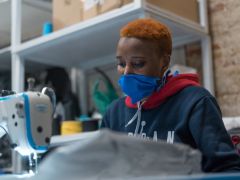 D-2388 What’s the Best Material for a Mask?
D-2388 What’s the Best Material for a Mask?Federal health officials have now recommended that we cover our faces with fabric during the coronavirus pandemic. But what material offers the most protection?
The Centers for Disease Control and Prevention has posted a no-sew mask pattern using a bandanna and a coffee filter as well as a video on making masks using rubber bands and folded fabrics found at home.
While a simple face covering can reduce the spread of coronavirus by blocking outgoing germs from coughs or sneezes of an infected person, experts say there is more variation in how much homemade masks might protect the wearer from incoming germs, depending on the fit and quality of the material used.
Scientists around the country have taken it upon themselves to identify everyday materials that do a better job of filtering microscopic particles. In recent tests, HEPA furnace filters scored well, as did vacuum cleaner bags, layers of 600-count pillowcases and fabric similar to flannel pajamas. Stacked coffee filters had medium scores. Scarves and bandanna material had the lowest scores, but still captured a small percentage of particles.
If you don’t have any of the materials that were tested, a simple light test can help you decide whether a fabric is a good candidate for a mask.
“Hold it up to a bright light,” said Dr. Scott Segal, chairman of anesthesiology at Wake Forest Baptist Health who recently studied homemade masks. “If light passes really easily through the fibers and you can almost see the fibers, it’s not a good fabric. If it’s a denser weave of thicker material and light doesn’t pass through it as much, that’s the material you want to use.”
Researchers say it’s important to remember that lab studies are conducted under perfect conditions with no leaks or gaps in the mask, but the test methods give us a way to compare materials. And while the degree of filtration for some homemade masks seems low, most of us — who are staying home and practicing social distancing in public — don’t need the high level of protection required for medical workers. More important, any face covering is better than none, especially if worn by a person who has the virus but doesn’t know it.
The biggest challenge of choosing a homemade mask material is to find a fabric that is dense enough to capture viral particles, but breathable enough that we can actually wear it. Some items being touted online promise high filtration scores, but the material would be unwearable.
Dressing Up for Work … at Home
Yang Wang, an assistant professor of environmental engineering at Missouri University of Science and Technology, worked with his graduate students to study various combinations of layered materials — including both air filters and fabric. “You need something that is efficient for removing particles, but you also need to breathe,” said Dr. Wang, who last fall won an international award for aerosol research.To test everyday materials, scientists are using methods similar to those used to test medical masks, which everybody agrees should be saved for medical workers who are exposed to high doses of virus from seeing infected patients. The best medical mask — called the N95 respirator — filters out at least 95 percent of particles as small as 0.3 microns. By comparison, a typical surgical mask — made using a rectangular piece of pleated fabric with elastic ear loops — has a filtration efficiency ranging from 60 to 80 percent.
Dr. Wang’s group tested two types of air filters. An allergy-reduction HVAC filter worked the best, capturing 89 percent of particles with one layer and 94 percent with two layers. A furnace filter captured 75 percent with two layers, but required six layers to achieve 95 percent. To find a filter similar to those tested, look for a minimum efficiency reporting value (MERV) rating of 12 or higher or a microparticle performance rating of 1900 or higher.
The problem with air filters is that they potentially could shed small fibers that would be risky to inhale. So if you want to use a filter, you need to sandwich the filter between two layers of cotton fabric. Dr. Wang said one of his grad students made his own mask by following the instructions in the C.D.C. video, but adding several layers of filter material inside a bandanna.
Dr. Wang’s group also found that when certain common fabrics were used, two layers offered far less protection than four layers. A 600 thread count pillow case captured just 22 percent of particles when doubled, but four layers captured nearly 60 percent. A thick woolen yarn scarf filtered 21 percent of particles in two layers, and 48.8 percent in four layers. A 100 percent cotton bandanna did the worst, capturing only 18.2 percent when doubled, and just 19.5 percent in four layers.
The group also tested Brew Rite and Natural Brew basket-style coffee filters, which, when stacked in three layers, showed 40 to 50 percent filtration efficiency — but they were less breathable than other options.
If you are lucky enough to know a quilter, ask them to make you a mask. Tests performed at the Wake Forest Institute for Regenerative Medicine in Winston-Salem, N.C., showed good results for homemade masks using quilting fabric. Dr. Segal, of Wake Forest Baptist Health, who led the study, noted that quilters tend to use high-quality, high-thread count cotton. The best homemade masks in his study were as good as surgical masks or slightly better, testing in the range of 70 to 79 percent filtration. Homemade masks that used flimsier fabric tested as low as 1 percent filtration, Dr. Segal said.
The best-performing designs were a mask constructed of two layers of high-quality, heavyweight “quilter’s cotton,” a two-layer mask made with thick batik fabric, and a double-layer mask with an inner layer of flannel and outer layer of cotton.
Bonnie Browning, executive show director for the American Quilter’s Society, said that quilters prefer tightly woven cottons and batik fabrics that stand up over time. Ms. Browning said most sewing machines can handle only two layers of fabric when making a pleated mask, but someone who wanted four layers of protection could wear two masks at a time.
Ms. Browning said she recently reached out to quilters on Facebook and heard from 71 people who have made a combined total of nearly 15,000 masks. “We quilters are very much in the thick of what’s going on with this,” said Ms. Browning, who lives in Paducah, Ky. “One thing most of us have is a stash of fabric.”
People who don’t sew could try a folded origami mask, created by Jiangmei Wu, assistant professor of interior design at Indiana University. Ms. Wu, who is known for her breathtaking folded artwork, said she began designing a folded mask out of a medical and building material called Tyvek, as well as vacuum bags, after her brother in Hong Kong, where mask wearing is common, suggested it. (DuPont, the maker of Tyvek, said in a statement that Tyvek is intended for medical apparel, not masks.) The folded mask pattern is free online, as is a video demonstrating the folding process. In tests at Missouri University and University of Virginia, scientists found that vacuum bags removed between 60 percent and 87 percent of particles. But some brands of vacuum bags may contain fiberglass or are harder to breathe through than other materials, and shouldn’t be used. Ms. Wu used a bag by EnviroCare Technologies, which has said it does not use fiberglass in its paper and synthetic cloth bags.
“I wanted to create an alternative for people who don’t sew,” said Ms. Wu, who said she is talking to various groups to find other materials that will be effective in a folded mask. “Given the shortage of all kinds of materials, even vacuum bags might run out.”
The scientists who conducted the tests used a standard of 0.3 microns because that is the measure used by the National Institute for Occupational Safety and Health for medical masks.
Linsey Marr, a Virginia Tech aerosol scientist and an expert in the transmission of viruses, said the certification method for respirators and HEPA filters focuses on 0.3 microns because particles around that size are the hardest to catch. While it seems counterintuitive, particles smaller than 0.1 microns are actually easier to catch because they have a lot of random motion that makes them bump into the filter fibers, she said.
“Even though coronavirus is around 0.1 microns, it floats around in a wide range of sizes, from around 0.2 to several hundred microns, because people shed the virus in respiratory fluid droplets that also contain lots of salts and proteins and other things,” said Dr. Marr. “Even if the water in the droplets fully evaporates, there’s still a lot of salt and proteins and other gunk that stays behind as solid or gel-like material. I think 0.3 microns is still useful for guidance because the minimum filtration efficiency will be somewhere around this size, and it’s what NIOSH uses.”
Learn More -
 YASHA LIST-1310-B FOR LUMMUS COTTON GIN EQUIPMENT LISTYASHA LIST-1310-B FOR LUMMUS COTTON GIN EQUIPMENT LIST American Plant & Equipment is dedicated to providing high-quality industrial machinery and equipment for various manufacturing and processing needs. Below is a detailed list of Lummus Cotton Gin Equipment, designed for efficient cotton processing. These machines are engineered to enhance productivity, reduce waste, and ensure high-quality output in the cotton ginning process. Each piece of equipment is described with its specific function and technical specifications, ensuring you have the right tools for optimal performance in your operations. Learn More
YASHA LIST-1310-B FOR LUMMUS COTTON GIN EQUIPMENT LISTYASHA LIST-1310-B FOR LUMMUS COTTON GIN EQUIPMENT LIST American Plant & Equipment is dedicated to providing high-quality industrial machinery and equipment for various manufacturing and processing needs. Below is a detailed list of Lummus Cotton Gin Equipment, designed for efficient cotton processing. These machines are engineered to enhance productivity, reduce waste, and ensure high-quality output in the cotton ginning process. Each piece of equipment is described with its specific function and technical specifications, ensuring you have the right tools for optimal performance in your operations. Learn More -
 R-4395 SQUARE (RECTANGLE) BUBBLE GUM PRODUCTION LINE, CAPACITY 80 KG/HOUR
R-4395 SQUARE (RECTANGLE) BUBBLE GUM PRODUCTION LINE, CAPACITY 80 KG/HOURREFERENCE NUMBER: R-4395
SQUARE (RECTANGLE) BUBBLE GUM PRODUCTION LINE, CAPACITY 80 KG/HOUR
MAIN TECHNICAL PARAMETERS:
PROFILES:
THIS LINE IS USED TO PRODUCE CANDIES IN VARIOUS COLORS AND DESIGNS, ESPECIALLY BUBBLE GUM IN X SHAPE, CUBIC, CORRUGATED, CHANNEL STYLE, AND OTHER KINDS.
IT IS DESIGNED TO FACILITATE THE OPERATION WITH RELIABLE PERFORMANCE AND CHANGEABLE CANDY STYLE.
A CORRUGATION-STYLE WRAPPING MACHINE OR A CUTTING/WRAPPING MACHINE CAN BE SUPPLIED IF REQUIRED.
ADVANTAGES:
1) RELIABILITY, EASY CLEANING AND MAINTENANCE
2) ACCURATE CUTTING AND SIMPLE CHANGEOVER
3) EASY OPERATION
4) AUTOMATIC BELT TENSIONING
REFERENCE NUMBER: R-4395
SQUARE (RECTANGLE) BUBBLE GUM PRODUCTION LINE, CAPACITY 80 KG/HOUR
MAIN TECHNICAL PARAMETERS:
PROFILES:
THIS LINE IS USED TO PRODUCE CANDIES IN VARIOUS COLORS AND DESIGNS, ESPECIALLY BUBBLE GUM IN X SHAPE, CUBIC, CORRUGATED, CHANNEL STYLE, AND OTHER KINDS.
IT IS DESIGNED TO FACILITATE THE OPERATION WITH RELIABLE PERFORMANCE AND CHANGEABLE CANDY STYLE.
A CORRUGATION-STYLE WRAPPING MACHINE OR A CUTTING/WRAPPING MACHINE CAN BE SUPPLIED IF REQUIRED.
ADVANTAGES:
1) RELIABILITY, EASY CLEANING AND MAINTENANCE
2) ACCURATE CUTTING AND SIMPLE CHANGEOVER
3) EASY OPERATION
4) AUTOMATIC BELT TENSIONING
Learn More
